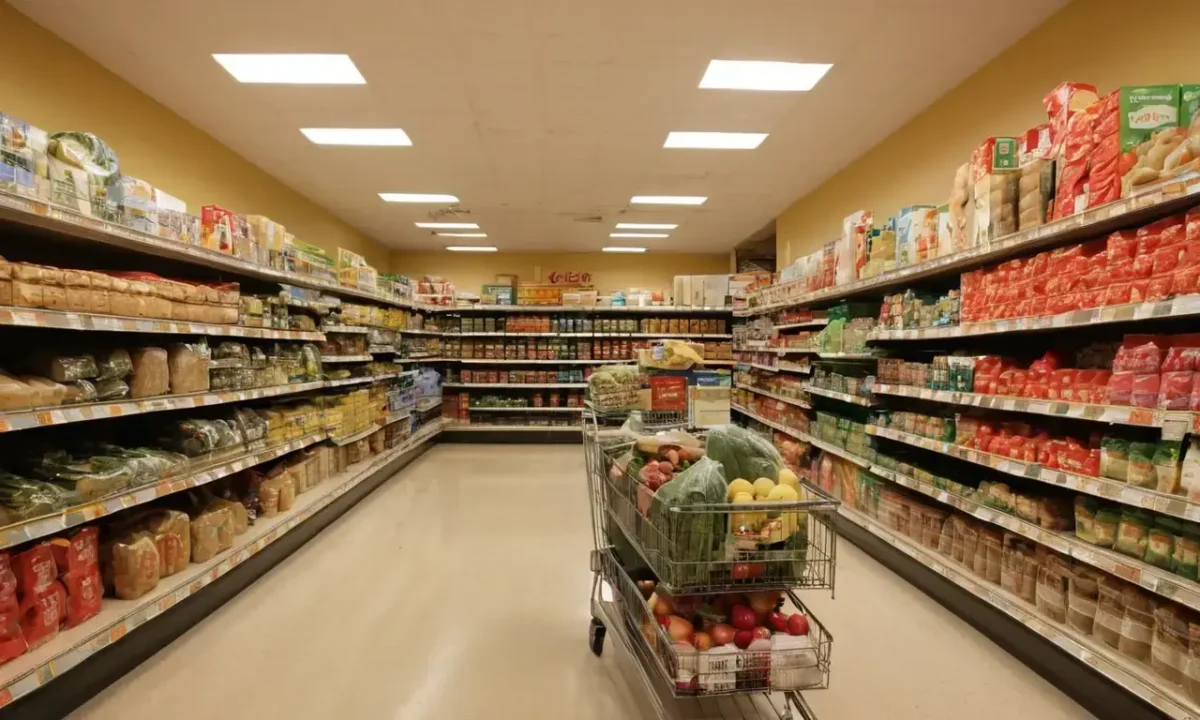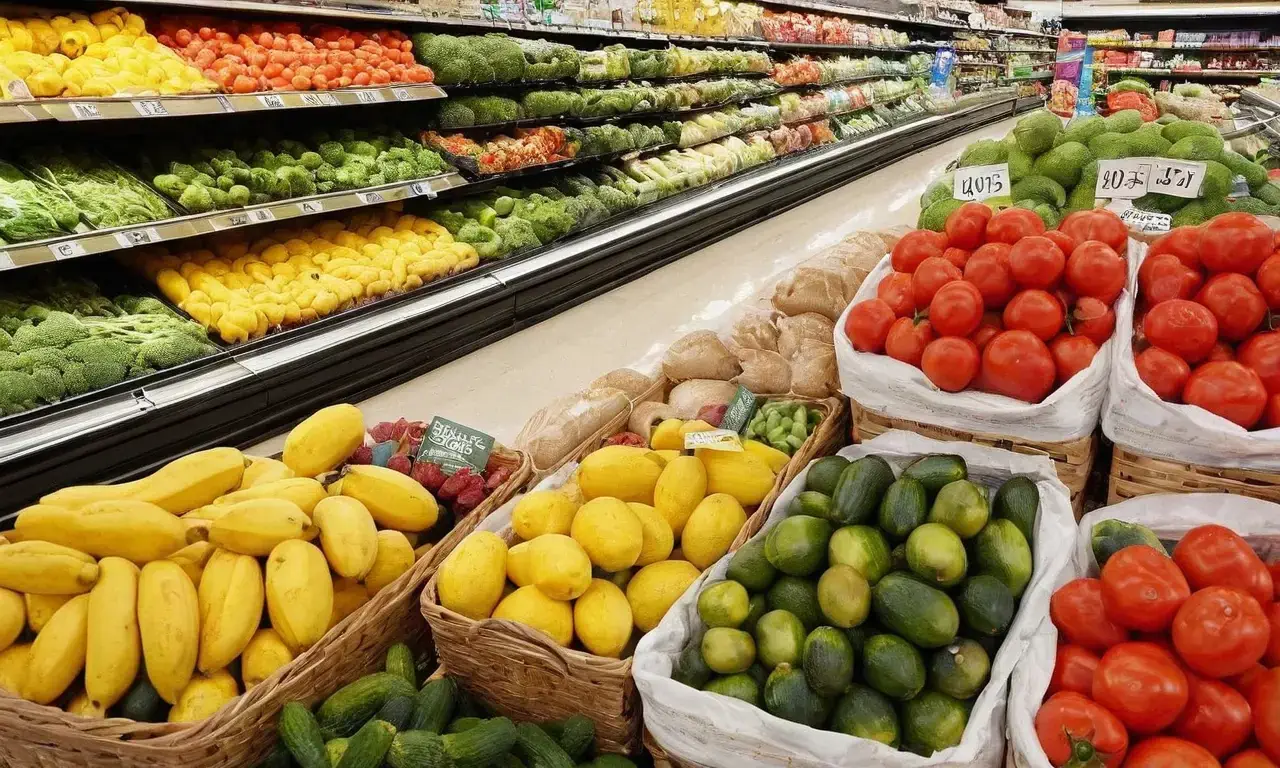
Food Costs: The Hidden Expenses in American Households

The cost of food is a significant expense for many American households, often overshadowed by other financial obligations. Despite its importance, understanding how much we spend on groceries and the factors that influence these costs can be challenging. According to recent data, the average American spends around 13% of their annual household income on food, with approximately half of this amount going towards grocery bills. This translates to about $60 per trip to the store, assuming two visits per week. However, frequent trips can lead to impulse purchases and increased costs, while shopping in bulk or using coupons can help save money.
Understanding these dynamics is crucial for individuals seeking to manage their household budgets effectively. By examining various aspects of food spending habits, including grocery bills, meal planning strategies, and the impact of economic factors on food prices, we can gain a clearer picture of how to navigate the complex landscape of food costs in America. This article aims to provide an in-depth analysis of these topics, offering insights that will help readers make informed decisions about their food spending.
- The Average American's Food Spending Habits
- Hidden Expenses in Grocery Bills
- Impulse Purchases and Increased Costs
- Shopping Strategies for Savings
- Healthy Eating vs. Processed Foods
- Impact of Food Choices on Monthly Bills
- Economic Factors Influencing Food Prices
- Food Insecurity and Its Effects on Households
- The Role of Meal Planning in Budgeting
- Conclusion
The Average American's Food Spending Habits
The average grocery bill for 1 person can vary significantly depending on factors such as dietary preferences, geographic location, and lifestyle. However, the overall trend suggests that Americans spend a substantial portion of their income on food. According to data from the United States Department of Agriculture (USDA), the average monthly grocery bill for a family of four is around $800. This figure can fluctuate based on the number of people in the household and their eating habits.
Interestingly, research indicates that households with higher incomes tend to spend more on groceries than those with lower incomes. For instance, a study found that families earning above $75,000 per year spent approximately 15% of their income on food, while those earning below $25,000 spent around 10%. This disparity highlights the need for individuals across different income brackets to understand how they can optimize their grocery spending.
Beyond the initial cost of groceries, there are several hidden expenses that contribute to the overall average monthly grocery bill for family of 5. One such expense is food waste. According to a study by the Natural Resources Defense Council (NRDC), households in the United States throw away approximately one-third of their food supply each year. This translates to around $1,500 per household annually. By planning meals and using up leftovers, individuals can significantly reduce this unnecessary expenditure.
Another hidden expense is the cost of dining out or ordering takeout. While these options may seem convenient, they often come with higher price tags than cooking at home. A study by the market research firm NPD Group found that households that cook at home more frequently tend to save around $1,000 per year on food expenses compared to those who eat out more often.
Impulse Purchases and Increased Costs
Impulsive buying is a common phenomenon in grocery shopping, where individuals purchase items without careful consideration of their needs. This behavior can lead to increased costs over time due to the tendency to buy more than necessary. Research suggests that impulse purchases account for around 20% of total grocery spending. By implementing strategies such as making lists before shopping and avoiding temptation by not browsing aisles unrelated to your list, individuals can reduce this unnecessary expenditure.
Moreover, frequent trips to the store can also contribute to higher costs due to the likelihood of impulse buys. Shopping more frequently may seem convenient, but it often results in buying items that are not on sale or at a higher price than if purchased in bulk. Therefore, planning shopping trips and sticking to a list can be beneficial for managing grocery bills.
Shopping Strategies for Savings

Implementing effective shopping strategies is crucial for reducing the average grocery bill average. One of the most effective methods is buying in bulk when possible. Purchasing items like rice, pasta, or canned goods in larger quantities not only saves money but also reduces packaging waste. However, it's essential to ensure that these items will be consumed before they expire.
Another strategy is using coupons and discount codes. Many grocery stores offer digital coupons that can be loaded onto loyalty cards or mobile apps. By taking advantage of these offers, individuals can save a significant amount on their grocery bills. Additionally, shopping during sales periods and stockpiling non-perishable items when prices are low can also lead to substantial savings.
Healthy Eating vs. Processed Foods
The choice between healthy foods like fresh fruits and vegetables versus processed options significantly impacts the average food bill for 1 person. While healthier choices may be more expensive, they offer numerous health benefits that can reduce healthcare costs in the long run. A study by the Centers for Disease Control and Prevention (CDC) found that households that consume a diet rich in fruits and vegetables tend to have lower healthcare expenses.
However, the higher cost of healthy foods can be challenging for many families. To mitigate this, individuals might consider shopping at local farmers' markets or joining community-supported agriculture programs, which often offer more affordable options for fresh produce. Additionally, meal planning around seasonal produce can help reduce costs while ensuring a balanced diet.
Impact of Food Choices on Monthly Bills
The food choices made by households have a direct impact on their monthly bills. For instance, opting for organic foods or specialty products may increase the grocery bill. However, these choices also contribute to better health outcomes and potentially lower healthcare expenses in the long term. A study published in the Journal of Nutrition Education and Behavior found that families who choose healthier options tend to have lower rates of chronic diseases.
Furthermore, food preferences can influence the frequency of dining out or ordering takeout. Households that prefer cooking at home are more likely to save money on food expenses compared to those who frequently eat out. By understanding these dynamics, individuals can make informed decisions about their food choices and optimize their grocery spending accordingly.
Economic Factors Influencing Food Prices
Economic factors play a significant role in determining the cost of groceries. Changes in global commodity prices, such as fluctuations in oil prices or crop yields, can affect the price of various food items. For example, an increase in the price of wheat can lead to higher costs for bread and pasta. Understanding these economic influences is crucial for households looking to manage their grocery bills effectively.
Additionally, local economic conditions also impact food prices. Areas with high unemployment rates may experience increased food insecurity, leading to higher prices due to supply and demand imbalances. By staying informed about local economic trends and global market fluctuations, individuals can better anticipate price changes and adjust their shopping strategies accordingly.
Food Insecurity and Its Effects on Households
Food insecurity is a pressing issue in many American households, particularly among low-income families. According to the USDA, approximately 11% of households experience food insecurity, meaning they lack access to enough food for an active, healthy life. This condition not only affects household budgets but also has broader societal implications.
Households experiencing food insecurity often resort to buying cheaper alternatives or relying on food banks and pantries. However, these options can lead to a diet that is high in processed foods and low in essential nutrients. By addressing the root causes of food insecurity through initiatives like SNAP (Supplemental Nutrition Assistance Program) and community gardens, policymakers can help alleviate this issue and promote healthier eating habits.
The Role of Meal Planning in Budgeting
Meal planning is an effective strategy for managing grocery bills. By planning meals in advance, individuals can avoid buying unnecessary items and reduce food waste. This approach also helps households save money by ensuring that they only purchase ingredients needed for the planned meals. According to a study published in the Journal of Food Science, meal planning can lead to savings of up to $1,000 per year.
Moreover, meal planning allows families to incorporate healthier options into their diet while staying within budget constraints. By choosing recipes that use affordable ingredients and minimizing food waste, households can enjoy nutritious meals without breaking the bank. This approach not only benefits household budgets but also contributes to a healthier lifestyle.
Conclusion
Managing grocery bills effectively requires a combination of strategies that address various aspects of food shopping and consumption. From implementing meal planning techniques to making informed choices about healthy foods versus processed options, individuals have numerous tools at their disposal. By understanding the impact of economic factors on food prices and addressing issues like food insecurity, households can optimize their grocery spending while promoting healthier eating habits.
Ultimately, a well-planned approach to grocery shopping not only saves money but also contributes to better health outcomes for individuals and families. By making informed decisions about what they buy and how they shop, households can navigate the complexities of grocery bills with confidence and financial stability.
This article provides an in-depth analysis of various strategies that households can use to manage their grocery bills effectively. From understanding economic factors influencing food prices to implementing meal planning techniques, it offers practical advice for individuals looking to optimize their grocery spending while promoting healthier eating habits.
Leave a Reply





Related Links